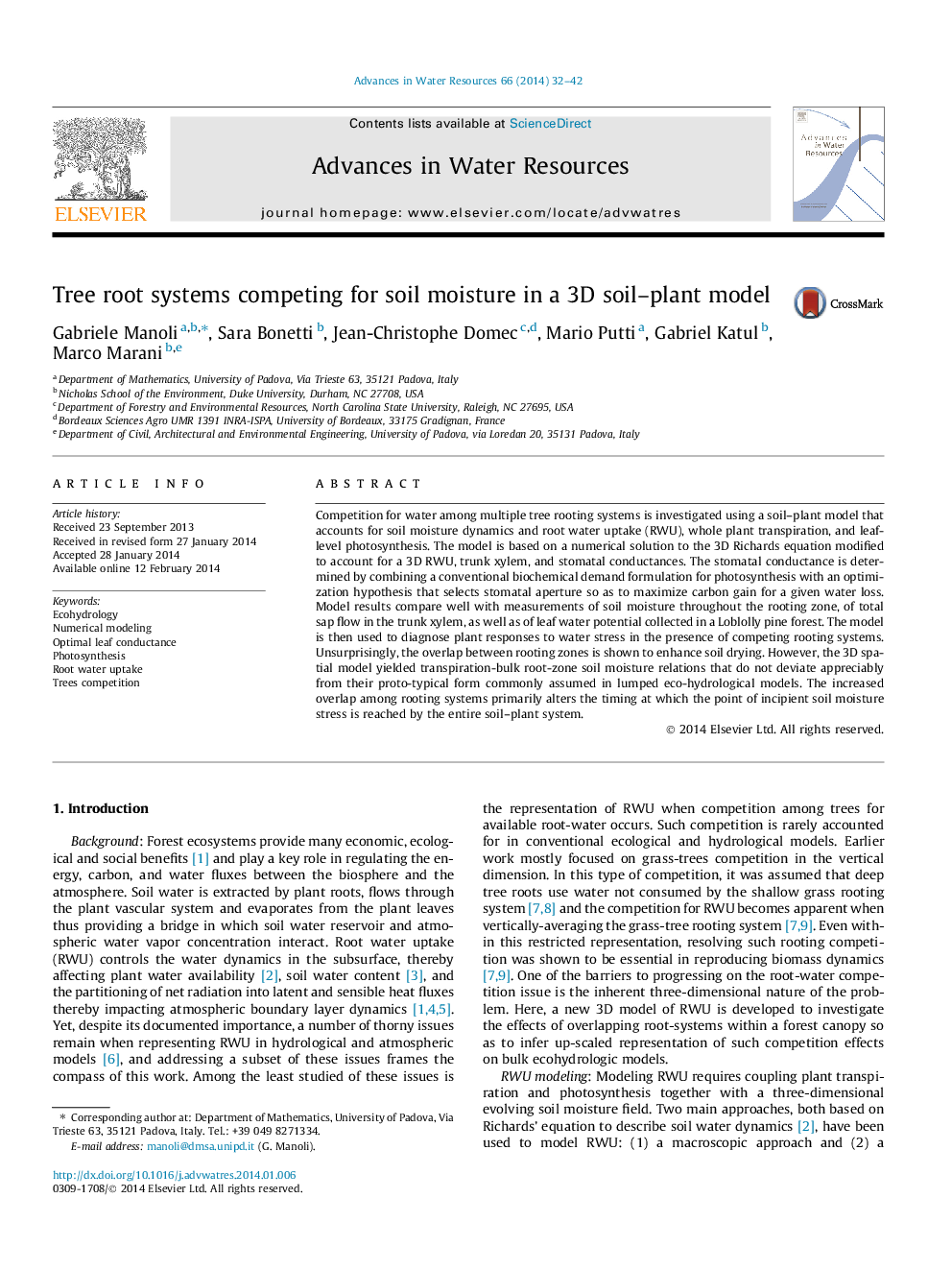| Article ID | Journal | Published Year | Pages | File Type |
|---|---|---|---|---|
| 4525596 | Advances in Water Resources | 2014 | 11 Pages |
•A new 3D soil–plant model is developed and tested.•The role of competing rooting systems on plant response to water stress is explored.•Increased root systems overlapping induces faster onset of stress conditions.•Root competition does not alter bulk transpiration–soil moisture relations.
Competition for water among multiple tree rooting systems is investigated using a soil–plant model that accounts for soil moisture dynamics and root water uptake (RWU), whole plant transpiration, and leaf-level photosynthesis. The model is based on a numerical solution to the 3D Richards equation modified to account for a 3D RWU, trunk xylem, and stomatal conductances. The stomatal conductance is determined by combining a conventional biochemical demand formulation for photosynthesis with an optimization hypothesis that selects stomatal aperture so as to maximize carbon gain for a given water loss. Model results compare well with measurements of soil moisture throughout the rooting zone, of total sap flow in the trunk xylem, as well as of leaf water potential collected in a Loblolly pine forest. The model is then used to diagnose plant responses to water stress in the presence of competing rooting systems. Unsurprisingly, the overlap between rooting zones is shown to enhance soil drying. However, the 3D spatial model yielded transpiration-bulk root-zone soil moisture relations that do not deviate appreciably from their proto-typical form commonly assumed in lumped eco-hydrological models. The increased overlap among rooting systems primarily alters the timing at which the point of incipient soil moisture stress is reached by the entire soil–plant system.
